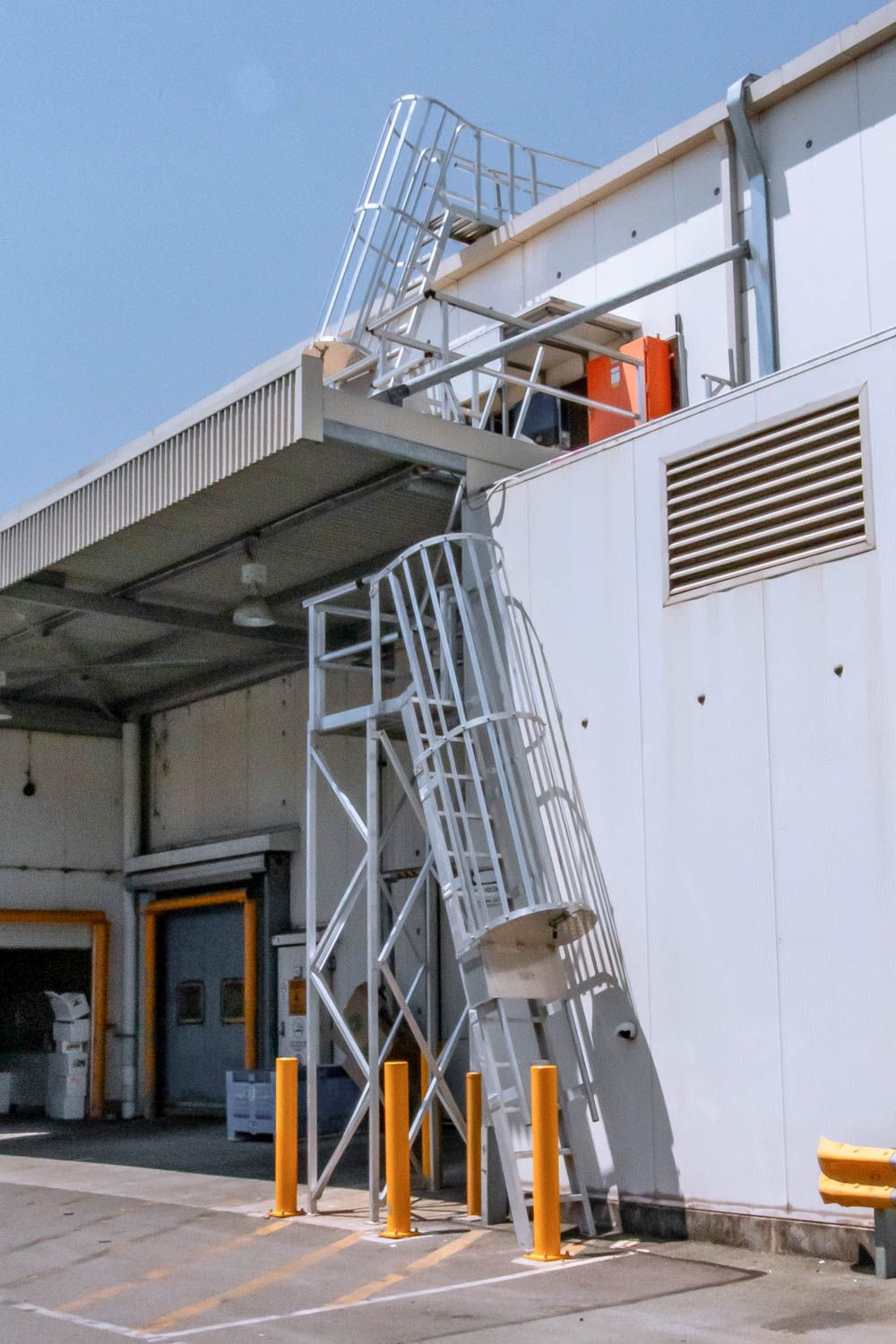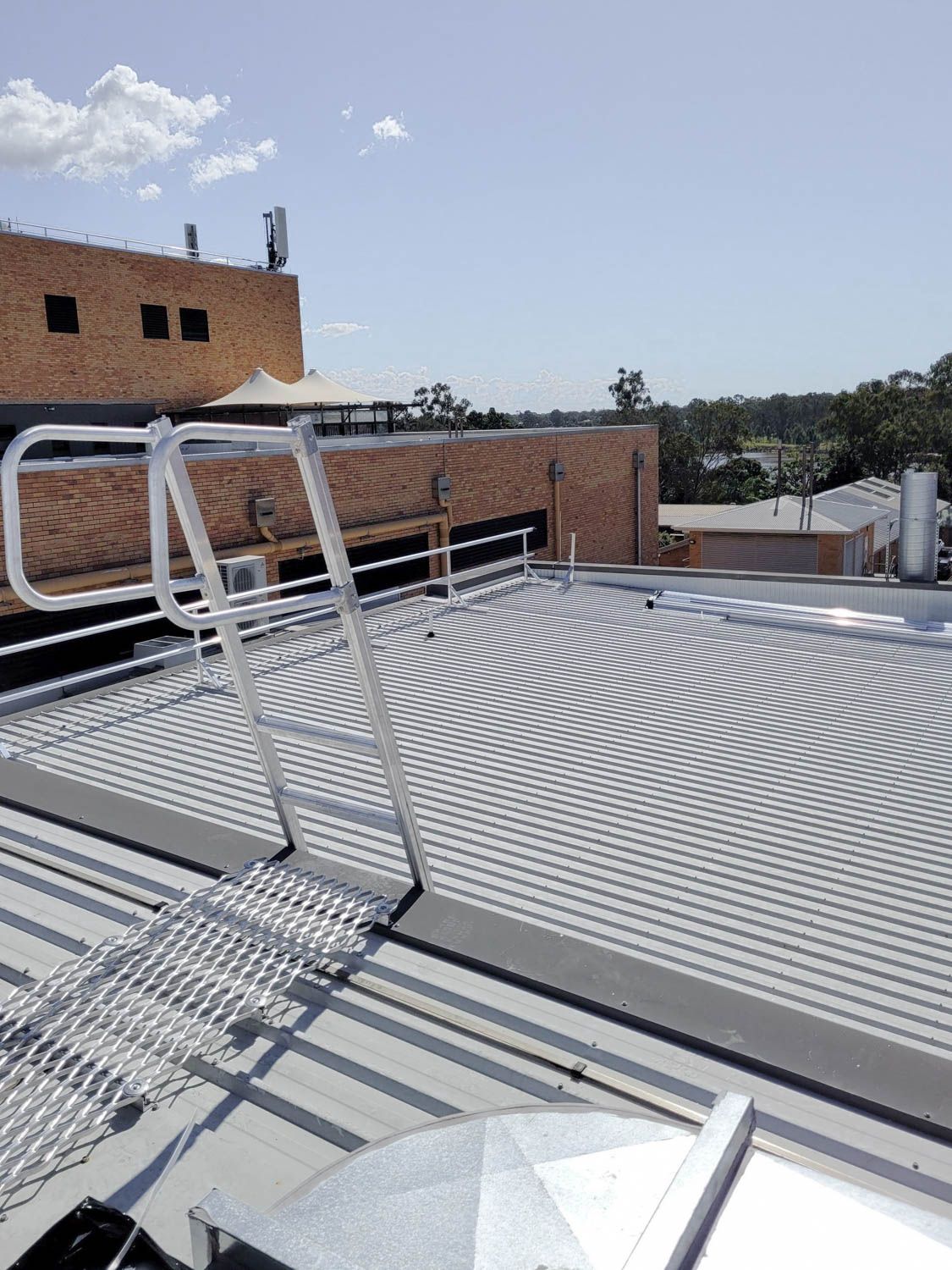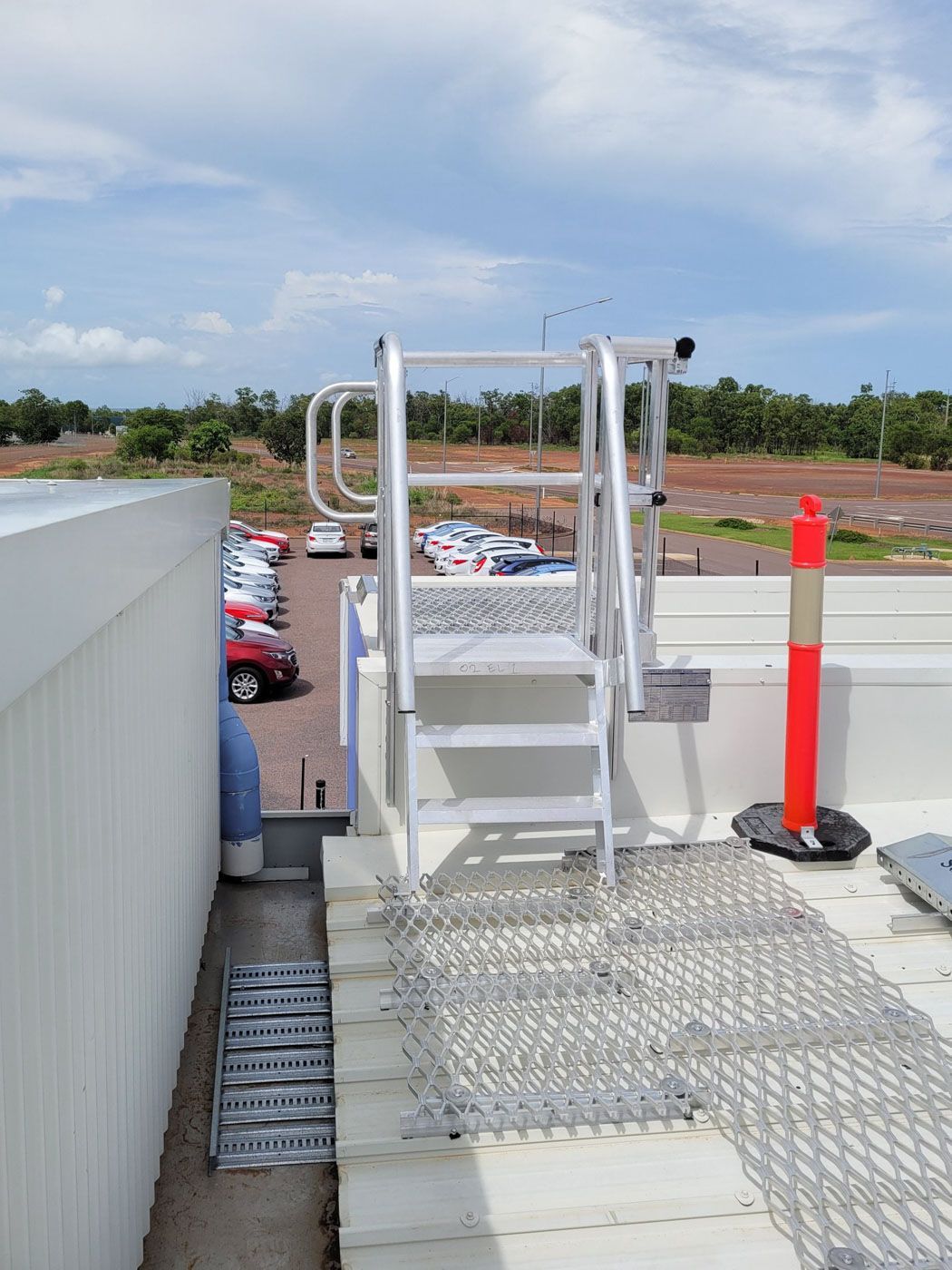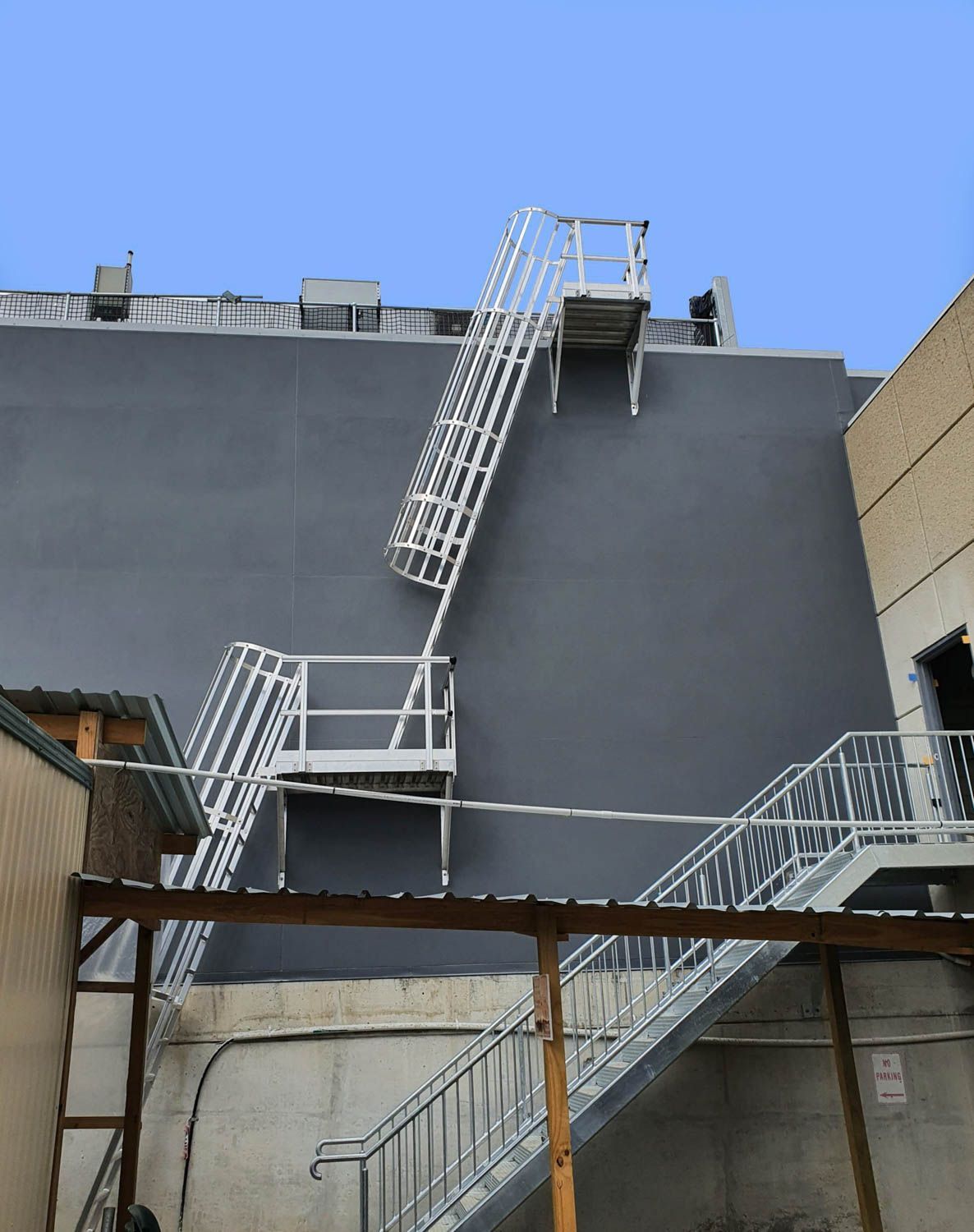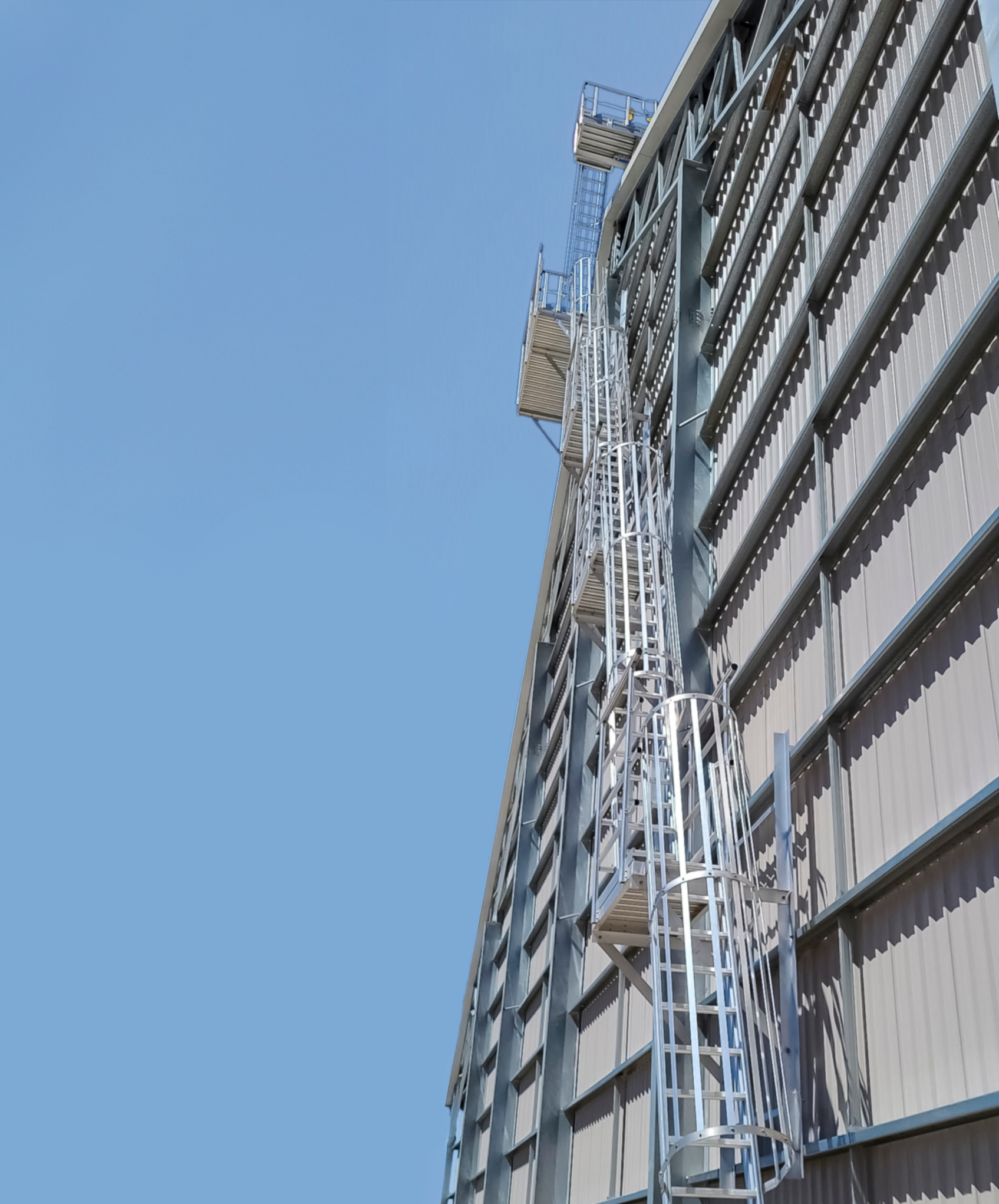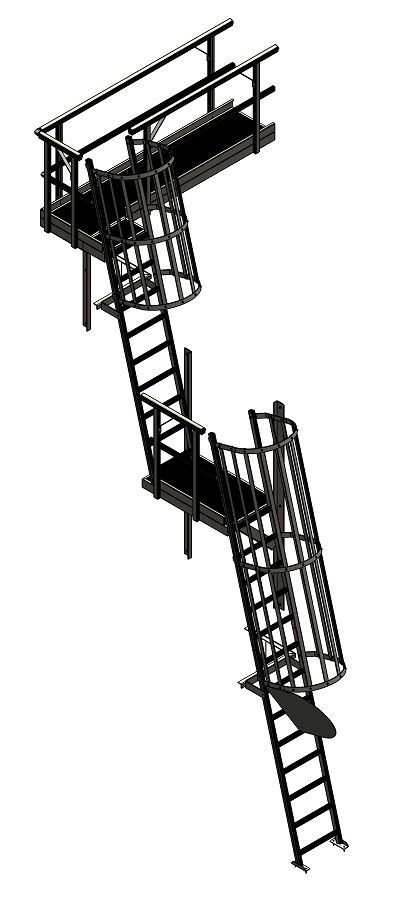Access Ladders
The Safetylyne Access Ladder System provides a strong, modular solution for safe ladder access between service areas - both indoors and outdoors.
Each fixed ladder offers better grip and longer spans for reliable roof access and height safety.
Fixed Access Ladders for Industrial Height Safety
Fixed roof access ladders offer direct vertical and inclined access for industrial, commercial, and agricultural facilities, and rooftops where regular maintenance and inspection are necessary.
Safetylyne builds each access system from structural aluminium and makes it fully compliant with AS1657:2018 standards. These roof ladder systems are engineered for strength, long-term durability, weather resistance, and compliance with workplace safety requirements.
When to Use Angled vs. Vertical Ladders
Choosing the right access ladder depends on your site layout, the frequency of use, and the safety level requirements.
Both angled and vertical ladder systems support safe, compliant roof and height access across industrial and commercial sites.
Angled Ladders
Angled ladders provide comfortable and reliable access for frequent climbs.
Fixed at a 60–75° angle, they are easy to use, simple to install, and they fit where there’s enough space for a gentle incline.
Vertical Ladders
Vertical ladders allow safe access in confined or restricted spaces.
Workers stay securely attached to a rail or cable while climbing the ladder, ensuring continuous fall protection. These ladders work well for towers, service shafts, and other areas where angled ladders can’t fit.
how to choose the Right Access Ladder System
When deciding between angled and vertical ladders, consider the following:
- Space and Structure: Angled ladders fit open areas, while vertical ladders are usually more suitable for tighter spaces.
- Usage and Frequency: Angled ladder systems work best for frequent climbs, and vertical systems are ideal for occasional access.
- Compliance: Both must meet AS 1657:2018 and site-specific safety requirements.
Safetylyne designs, manufactures, and installs custom access ladders that meet Australian height safety standards.
All access systems are built for strength, corrosion resistance, and long-term performance - from industrial plants and warehouses to commercial rooftops and HVAC platforms.
Every ladder can be fitted with anti-slip rungs, cage protection, and fall prevention systems to ensure every worker stays safe and confident at height.
Caged Ladders and Line Ladder Systems
Caged Ladders
Maintenance and service teams use caged ladders to reach rooftops, mezzanines, and elevated levels while staying protected from fall risk.
The aluminium cage surrounds the rungs to guide the user and reduce slip and fall risk. Cages also make the ladder easy to see and help control unauthorised access.
Caged access ladders must follow rules for ladder pitch, rung spacing, cage size, and anchorage to a suitable structure to meet AS 1657:2018.
Correct dimensions support safe entry and exit, and reliable roof access and height safety.
Caged access ladders suit regular maintenance tasks. If users often carry bulky tools or materials, consider access stairs or stair towers for better ergonomics.
Our team can assess your site and recommend the right solution.
In-Situ Project Example:
Here is how Safetylyne installed a caged ladder roof access system for a large national food processing facility in regional Queensland, providing safe roof maintenance access and bringing the site to full compliance.
Line Ladder Systems
Line ladder systems use a vertical lifeline or rail alongside the ladder to provide continuous fall protection. The user connects with a harness and a guided device that travels smoothly while climbing.
Line systems fit well on existing ladders and reduce the need for major modifications.
Their continuous attachment design adds strong protection in confined or high-risk areas.
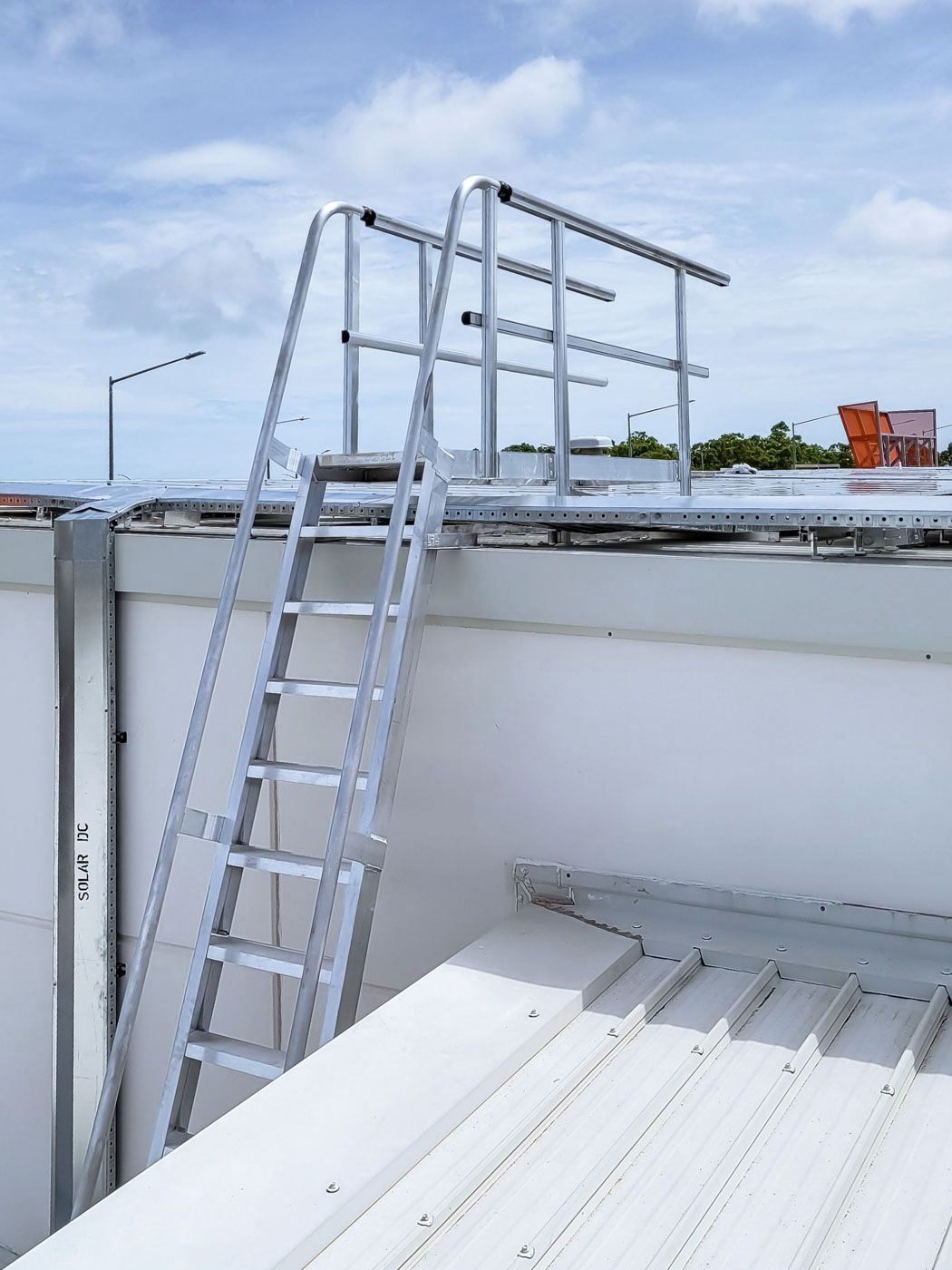
How to Choose the Right Access Ladder System
+ Space and structure
Use angled or caged ladders where space allows. Use line systems where space is limited or the climb is tall.
+ Use and frequency
Choose ladders for routine access. Choose stairs or stair towers for frequent carries or two-way traffic.
Step Widths and Australian Standards
In Australia, the width and design of steps or rungs are regulated to ensure safety.
Guidelines for Access Stairs:
- Minimum Step Width
According to AS 1657, the standard governing fixed platforms, walkways, stairways, and ladders, access stairs must have a minimum width of 600mm for standard stairways. However, wider steps are often used in high-traffic areas to accommodate multiple users and improve safety.
- Rung Width for Ladders
Rung stairs or ladders require rungs that are at least 400mm wide to provide sufficient stability and support. The spacing between rungs should typically range between 230mm and 300mm to allow safe and comfortable climbing.
- Tread Depth and Angle
Tread depth on standard stairs should be at least 185 mm to allow a comfortable and secure footing.
The stair angle typically ranges between 30° and 50°, depending on how often it will be used and the type of access required. In steeper applications, eg, rung ladders or restricted maintenance access, the incline may extend up to 60° or even vertical, as long as appropriate safety features like handrails or cages are installed.
These guidelines help ensure that all stair and ladder systems provide safe, reliable access to elevated or confined areas, protecting workers across industrial, maintenance, and construction sites.
Are ladders suitable for fire escape solutions compliance?
- It depends on the building height. Learn more about Fire Escape Access Solutions here.
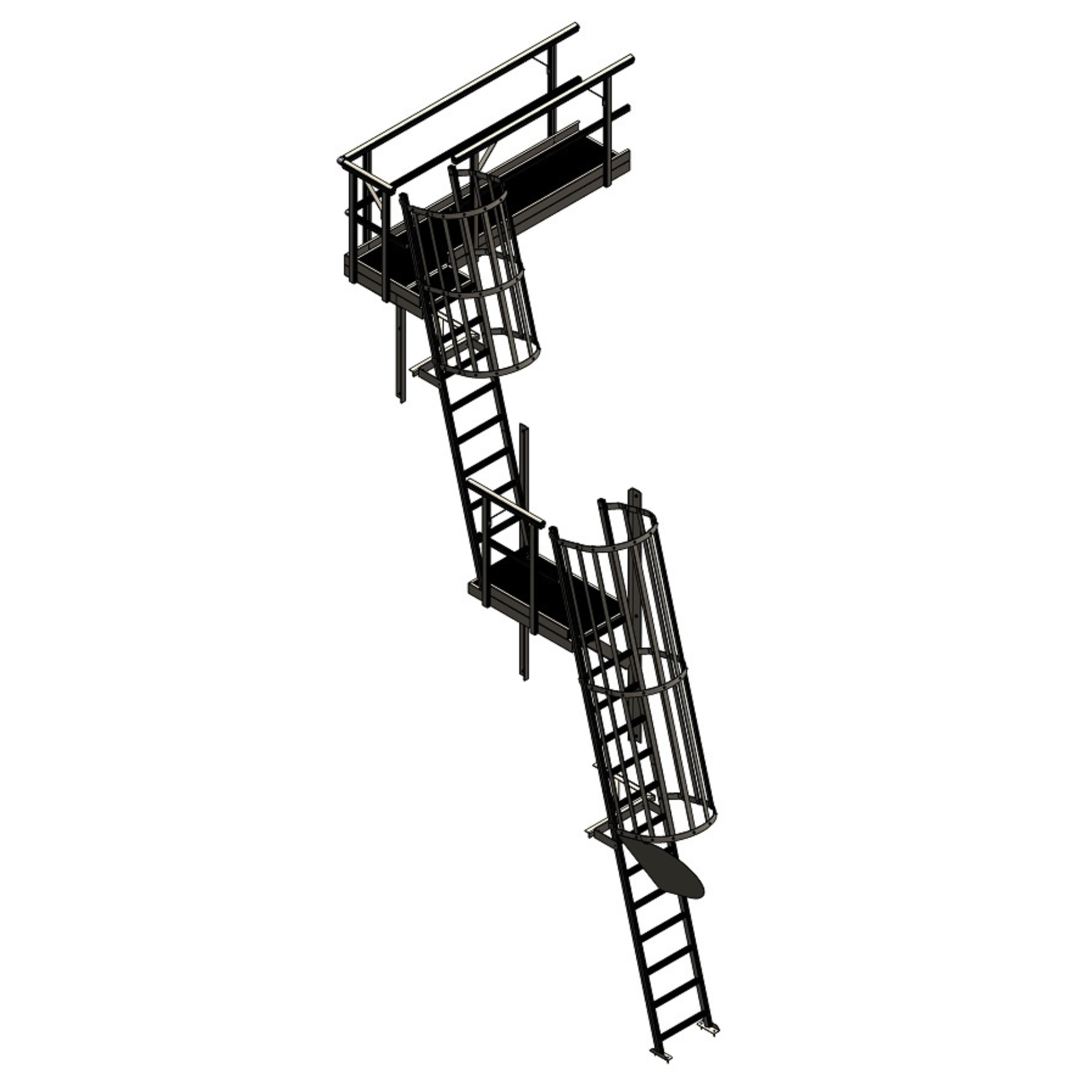
Nationwide Installation and Compliance
As a trusted provider of access systems across Australia, Safetylyne offers nationwide installation of access ladders, with a quick turnaround to ensure your projects remain on schedule.
Our commitment to delivering customised access solutions goes beyond just ladders.
We integrate our ladders into compete turn-key heigh safety projects with other roof access systems, eg. roof
walkways,
guardrails, and
platforms to provide comprehensive access systems that enhance safety and efficiency across your entire facility.
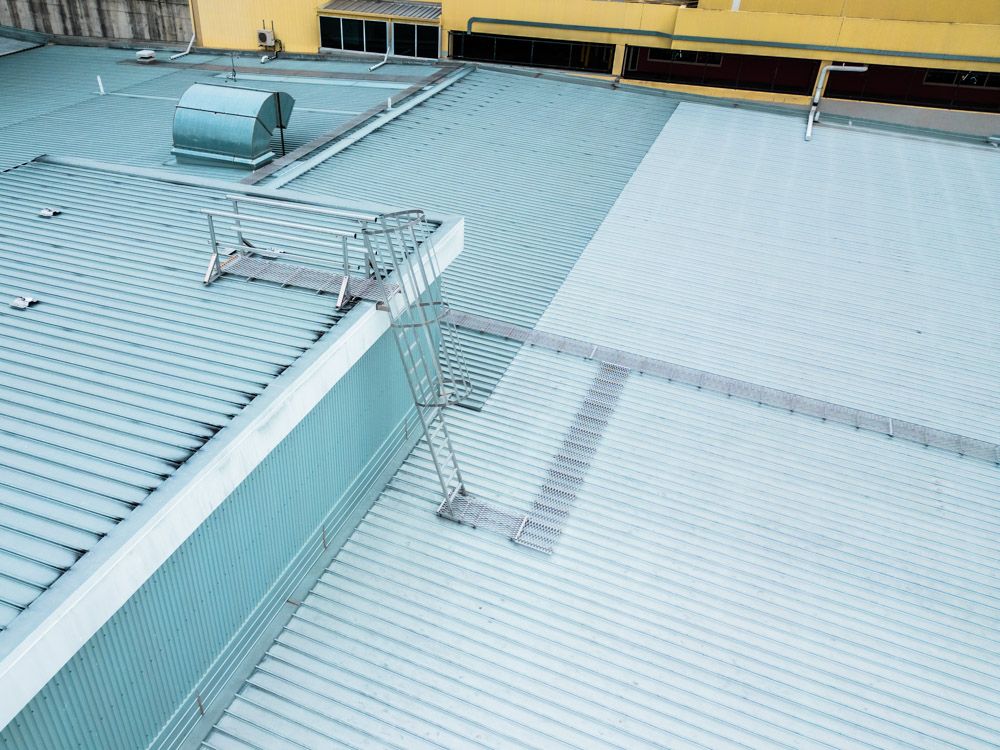
Have a Question?
See how our height safety consultants can help - get in touch with us today.
Contact Us
See how our caged ladders and are delivered and installed:
